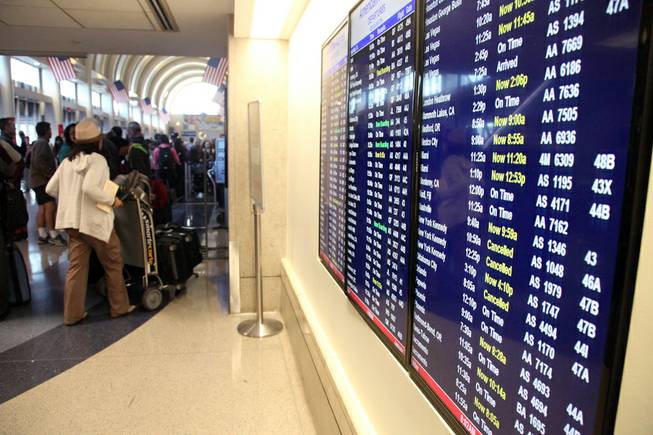
AP Photo/Nick Ut
A file photo from Jan. 3, 2014, shows a departure board listing flights canceled due to weather, Friday, Jan. 3, 2014, at Los Angeles International Airport. More than 30 departing flights were held on the ground for about an hour because of computer problems, Wednesday, April 30, 2014, according to an airport spokeswoman.
Published Wednesday, April 30, 2014 | 3:31 p.m.
Updated Wednesday, April 30, 2014 | 4:57 p.m.
LOS ANGELES — Flights from airports in the Los Angeles area were grounded for more than an hour Wednesday due to a computer failure at an air traffic control facility in the region, the Federal Aviation Administration said.
The problems rippled across the West. Dozens of planes heading into the Los Angeles area were diverted elsewhere or prevented from taking off at airports in Phoenix, Las Vegas, Oklahoma City and elsewhere.
McCarran International Airport spokesman Chris Jones says the stoppage lasted more than an hour on Wednesday afternoon. Jones says it ended a little after 3 p.m., but he encouraged travelers to check whether departure and arrival times for their flights had changed.
The "ground stop" in Southern California affected several airports including Los Angeles International, the nation's third busiest, where "over 30 departing flights were held on the ground," said Nancy Castles, an airport spokeswoman.
Officials at Bob Hope Airport in Burbank, near Los Angeles, said flights were held from 1:50 p.m. PDT until 3:20 p.m. PDT.
A notice posted on the FAA website said planes were not allowed to depart Los Angeles because of a failure of the agency's En Route Automation Modernization system, also known as ERAM.
The computer system allows air traffic controllers at several dozen "en route centers" around the country to identify and direct planes at high altitudes.
The Los Angeles en route center is located at the Palmdale Regional Airport, about 40 miles north of Los Angeles. It controls high altitude air traffic over southern and central California, Southern Nevada, southwestern Utah and western Arizona — except for airspace designated for military use.
Planes flying at lower altitudes are directed by approach control centers and local airport towers.
The ERAM system is critical to the FAA's plans to transition from a radar-based air traffic control system to satellite-based navigation, but its rollout is years behind schedule and hundreds of millions of dollars over budget.
ERAM is replacing another computer system that was so old that most of the technicians who understood its unique computer language have retired.

Join the Discussion:
Check this out for a full explanation of our conversion to the LiveFyre commenting system and instructions on how to sign up for an account.
Full comments policy